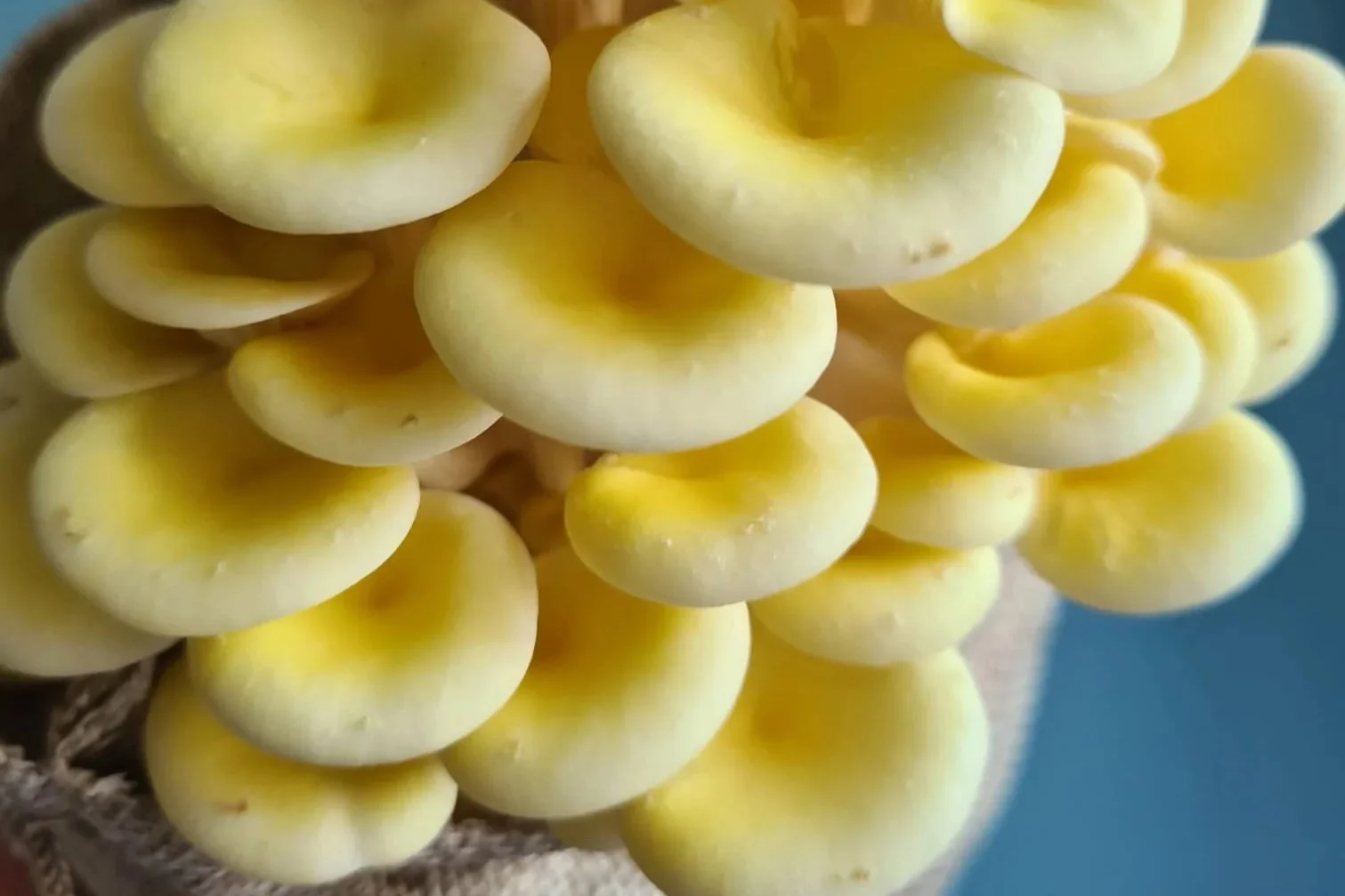Native vs. Non-native mushrooms and what’s at stake…
When it comes to growing mushrooms, most of us are captivated by their beauty, their benefits, and the magic of growing food from something as simple as a bag of straw. But beneath the surface of this fast-growing movement lies an important ecological conversation - one about native species, biosecurity and the potential risks of introducing non-native fungi into our natural environments.
What does “native” even mean?
Native /ˈneɪtɪv/ NOUN (of a plant or animal) of indigenous origin or growth.
A “native” species is generally defined as one that has evolved and established itself in a particular region without human intervention. These species have adapted to their environment over centuries - or millennia - forming part of a finely balanced ecosystem with plants, animals, other fungi, and microbes.
In the UK, native fungi include species such as Agaricus campestris (Field Mushroom), Lepista nuda (Wood Blewit), Cantharellus cibarius (Chanterelle) and a range of Russula and Boletus species. These mushrooms play vital roles - breaking down organic matter, supporting trees through mycorrhizal partnerships and providing food for wildlife.
In contrast, species like Pink Oyster (Pleurotus djamor) and Yellow/Golden Oyster (Pleurotus citrinopileatus) are native to subtropical and tropical parts of Asia. They are prized for their beauty, flavour, and rapid growth - and they’ve become popular with home growers. But they are not naturally part of the UK’s native fungal landscape.
Why are people worried about non-native oyster mushrooms?
There’s growing concern in ecological circles that fast-growing, non-native fungi could naturalise in temperate regions - spreading spores into the wild and outcompeting native fungi. Unlike invasive plants or animals, fungi are often harder to track and control because:
They reproduce through airborne spores that can travel kilometres.
They can live invisibly as mycelium within wood, soil, or plant material.
Opportunistic decomposers (like some Pleurotus species) can establish quickly where conditions are right.
While evidence and the intensity of impact vary by species and region, recent research and biodiversity records have raised particular concern about Yellow (Golden) Oyster in parts of temperate countries. Studies and citizen reports indicate the species is appearing outside its native range and that, on some colonised logs, fungal diversity and community composition appear altered when Golden Oyster becomes established.
The precautionary steps we’re taking at Caley Brothers
We love sharing the joy of growing - but we also believe in acting responsibly as the evidence and cautionary advice evolves. Here’s what we’ve changed and why:
1. We’ve stopped selling indoor grow kits of Yellow Oyster mushrooms
After reviewing the available research and expert guidance, we have removed this species from our grow-kit range. Where customers previously bought and used these kits indoors, we now recommend alternative species that pose lower ecological risk when used responsibly.
2. Disposal guidance - going beyond "dry and bin"
Previously we advised customers to leave spent substrate to dry out before disposing of it. While drying reduces viability, it is not fail-safe. To reduce any chance of mycelium or fruiting taking hold outside, we now recommend: allow the substrate to dry thoroughly, then seal it in a sturdy bag and dispose of it with your household residual waste (not food waste, not garden compost). Avoid placing spent substrate in public compost heaps, green-waste collections, or burying it in garden soil.
3. Grow tropical species indoors only
If you choose to grow tropical or subtropical oyster varieties, do so indoors and keep cultivation contained. Avoid inoculating outdoor logs, beds or open-air structures with non-native species.
4. Recommend native or low-risk alternatives for outdoor projects
For outdoor log culture and community planting, choose species known to be native or widely naturalised, such as Pleurotus ostreatus (Grey Oyster) or well-established, low-risk choices that local mycologists recommend.
5. Source spawn responsibly
Buy spawn and cultures from reputable suppliers who understand regional biosecurity concerns and who can advise on strains suitable for your purpose.
Practical advice for growers
Contain spent substrate. Don’t compost it outdoors. Dry, bag and dispose of it in your household waste.
Don’t dump kits into nature. Burying or leaving kits outdoors risks introducing non-native mycelium into wild systems.
Report sightings. If you find mushrooms that look like Yellow/Golden Oyster out in the wild, please photograph them (cap, underside/gills, and substrate) and report them to iNaturalist or your local recording scheme - these citizen reports help researchers and conservation groups track distributions.
Educate and label. If you run workshops or sell kits, include clear labelling about species origin and safe disposal.
Final thoughts - grow joyfully, grow responsibly
Mushrooms are among nature’s most powerful recyclers, healers and storytellers. With every kit sold and every workshop run we spread curiosity and knowledge - and with that comes responsibility. By choosing to stop selling Yellow Oyster kits and to adopt stronger disposal practices, we’re taking a cautious stance informed by emerging research and best-practice biosecurity.
At Caley Brothers, we’re not just growing mushrooms - we’re growing awareness, one shroom at a time.
If you have any questions or curiosities during your growing journey, be sure to explore our FAQs and troubleshooting blog. Each post offers insights into the fascinating world of mushroom growing - from the simplicity of our easy-grow kits to helpful advice when nature takes an unexpected turn.
We believe that understanding the basics not only helps you grow more successfully but also deepens your appreciation for the natural world. Growing mushrooms is as much about working with nature as it is about harvesting delicious results.
Happy growing
Ⓒ Caley Brothers 2025





